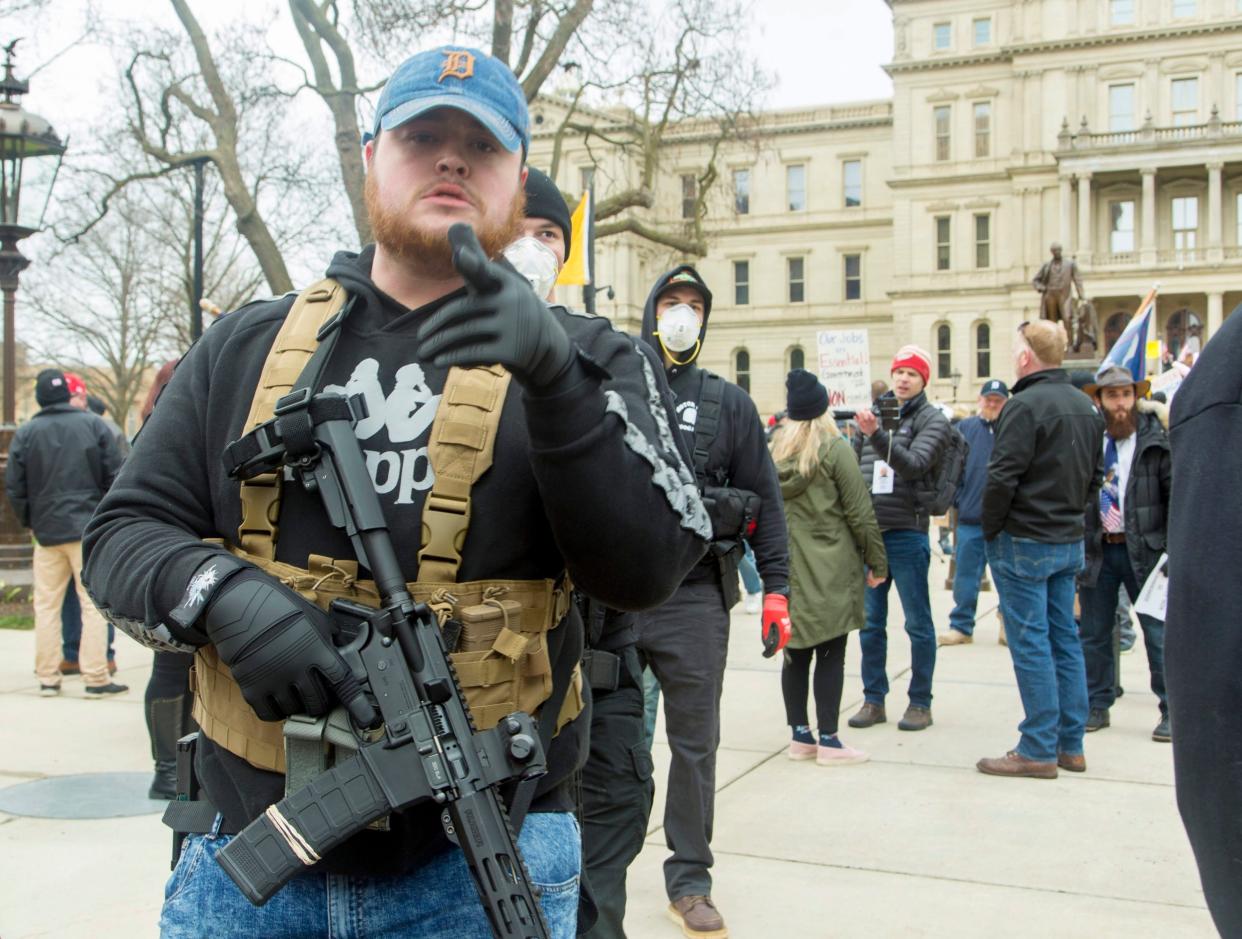The 'Operation Gridlock' protests in Michigan are being held by the same people Governor Whitmer wants to protect

Michigan protesters swarmed the state capital on Wednesday, demonstrating against Democratic Governor Gretchen Whitmer’s latest state restrictions. These restrictions are some of the strictest in the country, including a ban on in-state traveling, which blocks downstate residents from fleeing to their summer cottages in the less densely affected northern counties in the state. It seems every step the governor takes confirms for conservative voters what they have always suspected — that liberals don’t care about them. Even as Whitmer is trying to save their lives.
The lion’s share of the Covid-19 cases in Michigan are in the more populous and politically liberal counties in the southeast region of the state, including Wayne, Oakland, Macomb and Genesee (where the city of Flint is). The number of cases reported in the deeply red northern regions is practically negligible, but officials worry that these regions don’t have the medical infrastructure to withstand a widespread breakout should it reach these counties. Meanwhile, locals are worried about the devastating effects Whitmer’s restrictions are having on the tourism industry.
Northern Michigan’s economy relies heavily on its annual influx of seasonal residents and visitors, particularly in the summer. Second homes in Northern Michigan towns are common even for middle-class residents in the state, and small northern towns see their populations swell dramatically every year when downstate residents return up north.
Whitmer’s ban on traveling to vacation homes up north was an effort to keep residents in highly infected areas — like Oakland County, the wealthiest county in the state — from spreading in the north, where there are fewer economic and medical resources. But most of the state’s wealth is concentrated in areas like Oakland County (home to Quicken loans founder, billionaire Dan Gilbert, for example), which is now no longer contributing to the economy in northern regions.
A Michigan State University study suggests the north’s population increases by about 93,000 people between its peak in July and low point in January. Additional studies indicate tourism brings in billions of dollars to the state each year. A study conducted by Anderson Economic Group of East Lansing and released by Traverse City Tourism (located in the northeastern part of the state) showed that in 2012, tourism in the area accounted for nearly 30 per cent of the area’s employment. The city’s annual cherry festival, which brings in thousands of visitors each year, was shown by one estimate in 2016 to have had a $26.7m impact on the economy.
Speaking specifically for the tourism industry, it also doesn’t help that in January, Whitmer’s office voted to cut off funding for the state’s Pure Michigan campaign, a marketing effort to boost tourism in the region. (Advocates and tourism workers were furious about the move, while other studies indicated that the campaign’s effectiveness was dubious).
A hit to the state’s tourism industry has the potential to snowball, eventually hamstringing the entire area, crushing small retail businesses, rental home companies, and other industries. And the more successful Whitmer’s efforts are to keep social distancing measures in place and stop the spread into these regions, the harder the people in these counties are going to feel the financial effects.
Industries in the southeastern part of the state, such as manufacturing, are also feeling the economic impact, but demographically, the less densely populated northern regions are the most representative of Trump’s base. While Detroit and its surrounding counties are fairly diverse racially and even economically, the hard Republican-leaning counties largely comprise lower-income white voters. With a population already inclined to favor the president, with no personal experience of the disease but getting hammered economically, the protests taking shape in the capitol begin to make sense.
In February 2020, Mackinac County, located in the far north and home to several resort towns and summer residents, had the state’s highest unemployment rate at 17.9 per cent, followed by nearby Cheboygan at 14.3 per cent. These counties also claim the fewest number of coronavirus cases, reporting 4 and 12 respectively. By contrast, Oakland County’s unemployment rate is the seventh lowest at 2.9 per cent.
Two months later, the state’s unemployment rate is now close to a quarter of the workforce.
Wednesday’s protest, called “Operation Gridlock,” was organized by Michigan’s Conservative Coalition, who argued that the governor’s draconian restrictions were nothing more than political posturing. Republican National Committee Chairman Ronna McDaniel tweeted: “Gretchen, stop auditioning for VP & do your job.” He later referred to her actions as a “power grab.”
The north’s economy could be facing a total collapse, and these voters feel their strife is being ignored by a power-hungry Democratic governor who is too focused on a problem they can’t see or feel, and suspect is blown way out of proportion for media attention. Unfortunately, if Whitmer’s actions are successful, this will only confirm their suspicions. And if they’re not, many will die.

 Yahoo News
Yahoo News 
